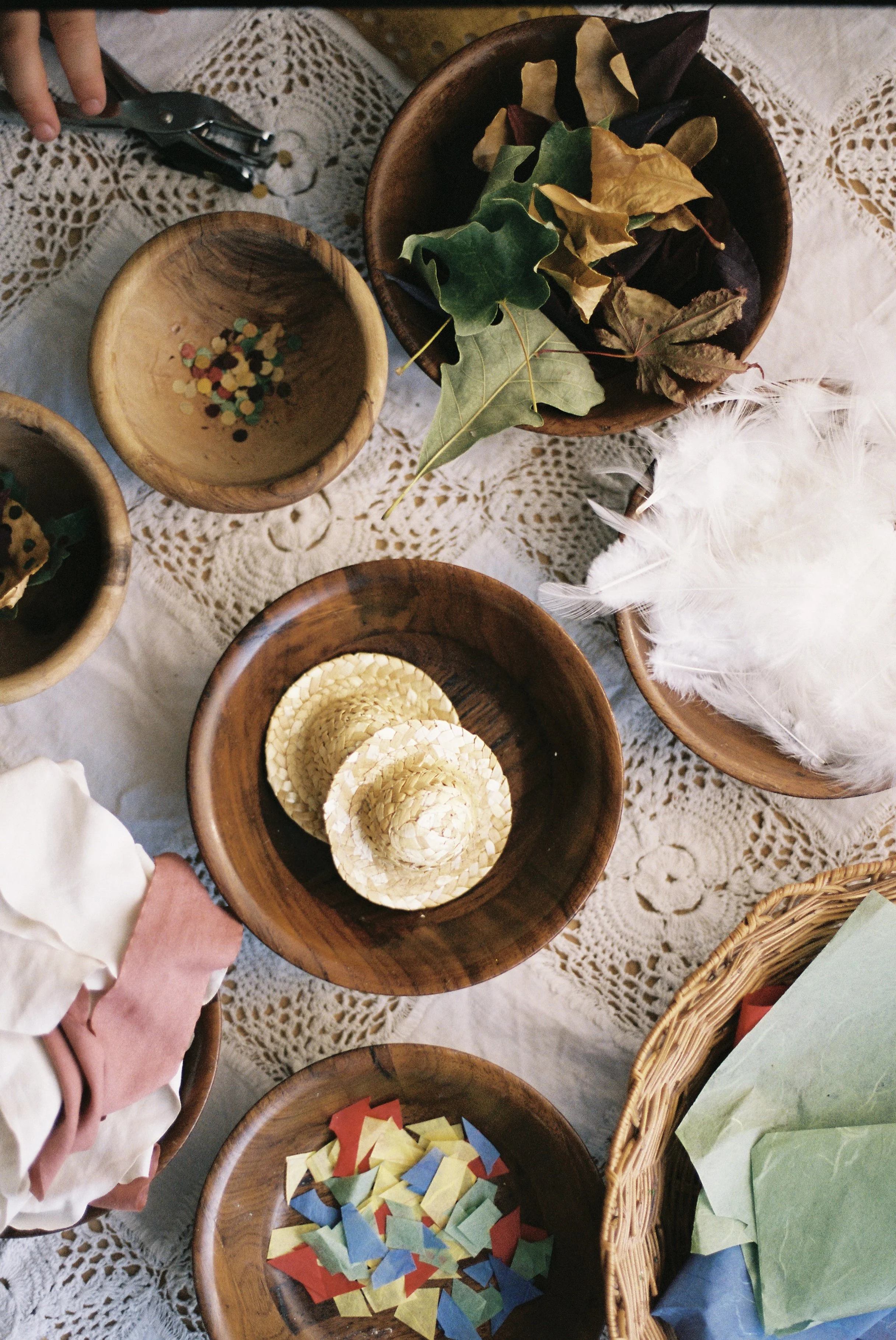
Play Like a Windy Day
LESSON 2
Children use an electric fan to explore how a variety of items move in the wind and play like a windy day.
The book, “Like a Windy Day,” by Frank Asch and Kevin Asch.
A fan
Ideas for items to blow in the fan:
Feathers
Seeds
Bubbles
Balloons
Play silks
Fragrance
Paper streamers
Lightweight scarves or fabrics
Small lightweight balls (e.g., ping pong balls)
Plastic bags
Ribbon strips
Leaves
Paper cups
Tissue paper
Natures confetti (hole punched leaves)
Pinecones
Pebbles
Sticks
Acorns
Materials
Gather materials
Read the story beforehand
Preparations
Facilitate a discussion on the factors causing pinwheels to spin.
Introduce and guide children in exploring wind-related items.
Involve children in the preparation of materials for the activity.
Engage children's attention during the reading of the story "Like a Windy Day."
Provide guidance as children experiment with different objects in the wind.
Use "I wonder" statements to stimulate critical thinking and discussion.
Facilitate sharing of children's thoughts and ideas about wind's effects on objects.
Objectives for Teachers
Children identify what makes a pinwheel spin.
Children explore various items related to wind with curiosity.
Children actively participate in preparing materials for the activity.
Children engage with the story "Like a Windy Day."
Children pause to observe illustrations during storytime, enhancing comprehension.
Children use their imaginations to play with the fan and materials as if it's a windy day.
Children experiment with different objects to observe their responses to the wind.
Children share their ideas and thoughts about the wind's effects on objects.
Objectives for Children

Collect and Connect
This poem is enjoyable to act out. Start by having your child stand like a tree while holding a leaf. When they hear "Run, children, run!" they can begin running around the room. Remind them that leaves are quiet as they float and fly through the air to keep them engaged. Encourage them to keep running and pretend to hide behind a tree. When the poem mentions the Northwind finding them tired, they can slow down and lie on the ground, ending the poem by pretending to be asleep.
The Northwind
The Northwind came along one day,
So strong and full of fun,
He called the leaves down from the trees
And said, “Run, children, run!”
They came in red and yellow dress,
In shaded green and brown,
And all the short October day,
He chased them round the town.
They ran in crowds, they ran alone,
They hid behind the trees,
The Northwind laughing found them there,
And said, “No stopping, please!”
But when he saw them tired out
And huddled in a heap,
He softly said, “Goodnight, my dears,
Now let us go to sleep!

Activity Flow
Begin this lesson by reflecting on the pinwheel activity from the first day. Encourage your child to ponder what made the pinwheel spin. Allow them to respond, and then introduce the items they will be exploring with a fan. Encourage them to explore each item in a playful way before unveiling the fan. You can even involve your child in the preparation of these items, such as inflating balloons, creating nature confetti from leaves using a hole punch, cutting tissue paper with child-safe scissors, and attaching ribbons to dowels to create streamers.
As they engage in some handwork, it may be an opportune moment to introduce the story, "Like a Windy Day." Many children tend to be more attentive when their hands are engaged. However, if your child is quite young and requires assistance with the item preparations, you can opt to read the story afterwards.
As you read the story, stop on each page to observe the illustrations. See if they can find the wind person on each page. Encourage your child to look for what items are blowing in the wind in the story. At the end of the story, ask your child if they could jump into a page of the story and begin playing, what page would they choose? Why? Then share what page you would like to jump into if you could and why.
After reading the story, invite your child to play like a windy day using the fan and the prepared materials. I also recommend experimenting with heavier objects like pebbles, pinecones, acorns, or sticks. Observe alongside your child as they explore these items and use "I wonder" statements to stimulate deeper thinking. For instance, "I wonder why the pebbles don't move in the wind," or "I wonder why the feathers dance while the acorns simply drop and remain on the ground." Encourage them to share their thoughts in response to these statements.
Forewarning, this activity can get a bit messy, but it's an incredibly fun experiment. Engage your children in the cleanup process afterward.









